15 Creative Ways to Incorporate Rocks into Your Landscaping
Rocks can transform your landscaping into a beautiful and functional outdoor space. Whether you are looking to create a serene garden or add some texture to your yard, rocks offer endless possibilities. From stylish stone paths to eye-catching water features, these natural materials can suit any style. They can help define spaces, improve drainage, and even serve as a focal point. Using rocks in your landscaping allows you to blend practicality with beauty. This guide will highlight some of the most stunning ways to incorporate rocks into your outdoor design. Let’s explore how rocks can elevate the look and feel of your yard.
This post may contain affiliate links, which helps keep this content free. Please read our disclosure for more info.
Rock Pathways

Using rocks to create a pathway is a beautiful and practical way to enhance your garden. A stone path can lead guests through your yard, offering a natural feel while still being functional. Depending on the size and shape of the stones, you can create a rustic, modern, or minimalist look that complements the surrounding plants and scenery.
Rock pathways are not only visually appealing but also help with water drainage, preventing muddy areas in your yard. Different types of rocks, such as flagstones, pebbles, or gravel, can be chosen to match the overall style of your landscaping. These paths are easy to maintain and can be modified as needed to suit the changing needs of your garden.
Rock Walls

Building a rock wall can give your landscaping an elegant yet sturdy appearance. Whether you are creating a retaining wall or just adding decorative stone accents, rocks bring structure and texture to your yard. The stones can be arranged in various ways to achieve a unique look, whether stacked loosely or tightly.
In addition to being visually striking, rock walls can serve a practical purpose, such as supporting sloped areas or providing separation between garden beds. The natural materials will blend with your plants, helping to create an organic and timeless look. This addition can be an excellent focal point, drawing the eye and enhancing your yard’s appeal.
Rock Water Features

A rock water feature, like a fountain or waterfall, can create a serene and tranquil atmosphere in your garden. Water flowing over smooth stones adds both sound and visual appeal, making your outdoor space feel like a peaceful retreat. You can use a combination of large boulders and smaller pebbles to achieve the perfect water flow.
These features can be designed to fit various themes, from a natural pond to a more polished contemporary style. The rocks around the water feature provide texture and interest, while the sound of water can help mask undesirable noises like traffic or noisy neighbors. Rock water features require minimal upkeep once set up and can dramatically transform the ambiance of your yard.
Rock Garden Beds

Creating rock garden beds is an ideal way to showcase your favorite plants in a unique and eye-catching way. Rocks placed around plants offer a beautiful contrast, allowing the colors and textures of your flowers and shrubs to stand out. You can arrange the rocks to form borders or clusters around specific plants or along the edges of garden beds.
The stones also help with soil retention and drainage, ensuring that your plants thrive in well-drained soil. Choose rocks that complement the color of your plants, and vary the size of the stones for a natural, layered look. Rock garden beds can be particularly effective in dry areas, as the rocks help to retain moisture and protect the plants from heat.
Rock Mulching
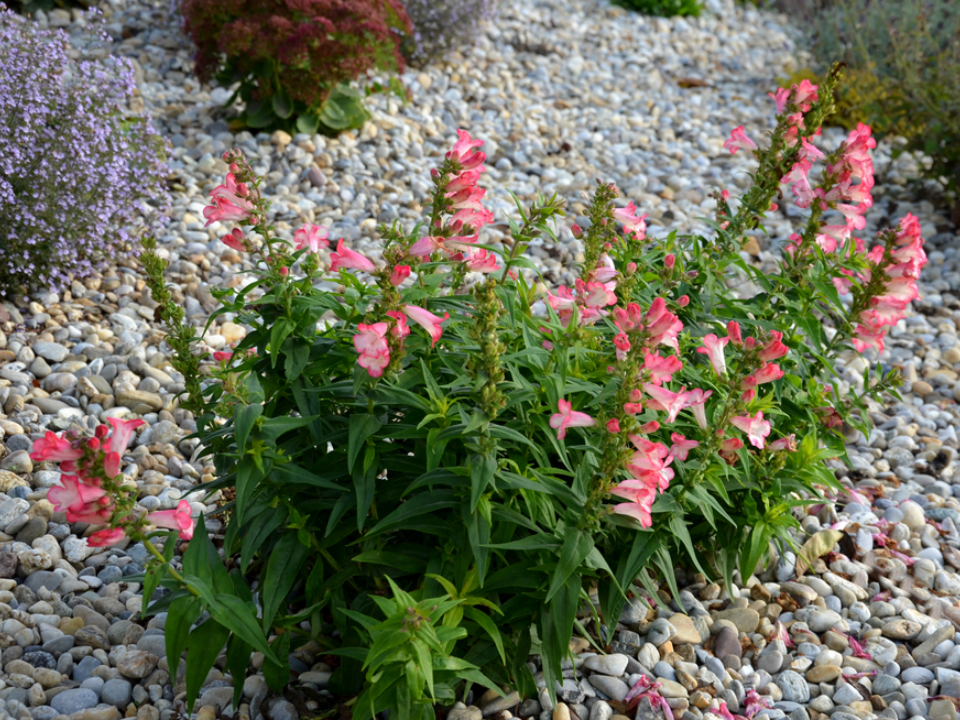
Rock mulching is an alternative to traditional wood mulch that can help to keep your garden beds looking neat and tidy. The stones act as a barrier against weeds and help to retain moisture in the soil. Additionally, rock mulch requires less maintenance compared to organic mulches, as it does not break down over time.
One of the biggest advantages of rock mulching is that it provides a permanent solution to weed growth and moisture retention. It also helps prevent soil erosion, especially in areas with heavy rainfall. You can use a variety of rocks, such as gravel, pebbles, or larger rocks, depending on your aesthetic preferences and the specific needs of your plants.
Stone Bench Seating
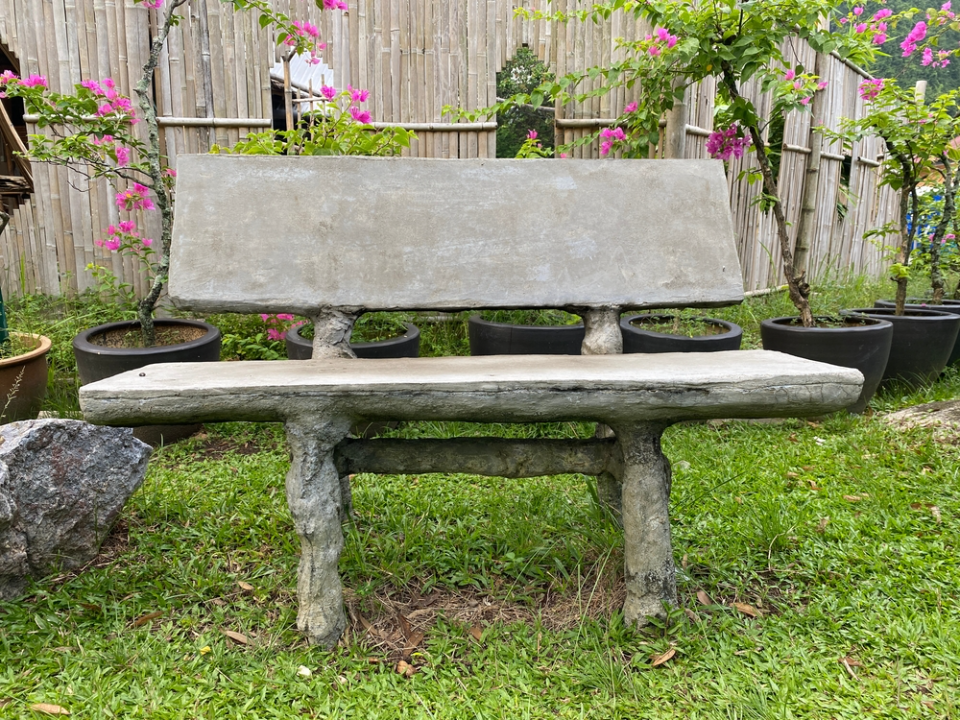
Incorporating stone seating into your landscaping provides a practical and aesthetically pleasing addition. A stone bench placed near a flower bed, under a tree, or along a pathway offers a spot to relax and enjoy your surroundings. These benches can be made from large flat stones or carved rocks, depending on the style you prefer.
Stone seating blends seamlessly with natural landscapes, creating a sense of permanence and tranquility. The cool surface of stone seating makes it comfortable during warm days, and the durability ensures that it will last for years with little maintenance. Stone benches can be positioned to create inviting outdoor spaces for relaxation and reflection.
Rock Sculptures
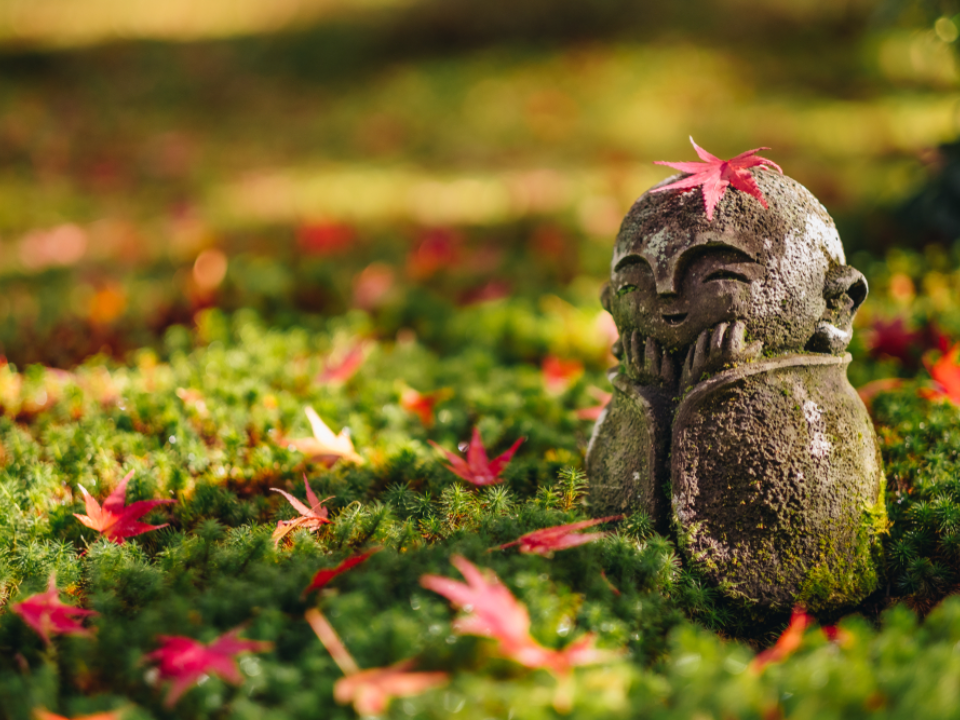
Adding rock sculptures to your landscaping is a creative way to bring an artistic touch to your outdoor space. Sculptures made from stones can range from abstract shapes to detailed representations of animals, trees, or even people. The materials used can vary, including natural boulders, pebbles, or hand-carved stones, each offering a different texture and visual impact.
Rock sculptures are great for adding personality and focal points to your yard. These works of art can be placed at the entrance of your garden, within a rock garden, or as a centerpiece in a courtyard. The natural colors of the stones blend well with most plantings, creating a harmonious and visually striking contrast.
Rock Borders
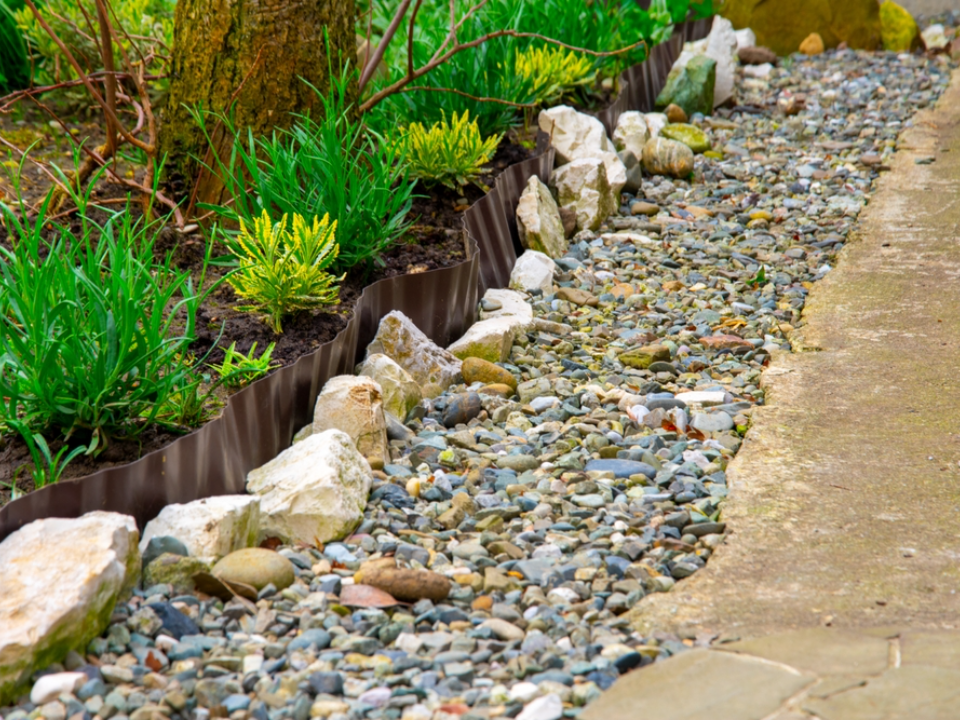
A simple yet effective way to enhance your garden is by using rocks as borders around flower beds, lawns, or walkways. These borders can help define different areas in your yard, creating a sense of structure and organization. You can use large, stacked stones for a bold statement or smaller, pebbled borders for a subtler look.
In addition to their aesthetic value, rock borders can help prevent grass from encroaching on garden beds. They can also help with drainage by directing water away from areas that may otherwise become waterlogged. Rock borders are versatile and can be arranged in various patterns, such as curved lines or straight edges, to complement the design of your garden.
Rock Pond Edging

If you have a pond or water feature in your yard, using rocks for pond edging can enhance the natural look of the space. Stones placed around the perimeter of your pond create a seamless transition between the water and the surrounding garden. The rocks provide texture and help to prevent soil erosion around the water’s edge.
By using various sizes and types of stones, you can create an organic look that mimics the natural environment. Larger stones can be used at the edge, while smaller pebbles or gravel can fill in the spaces for a more polished finish. Rock pond edging not only improves the visual appeal of your water feature but also helps maintain its stability.
Rock Steps
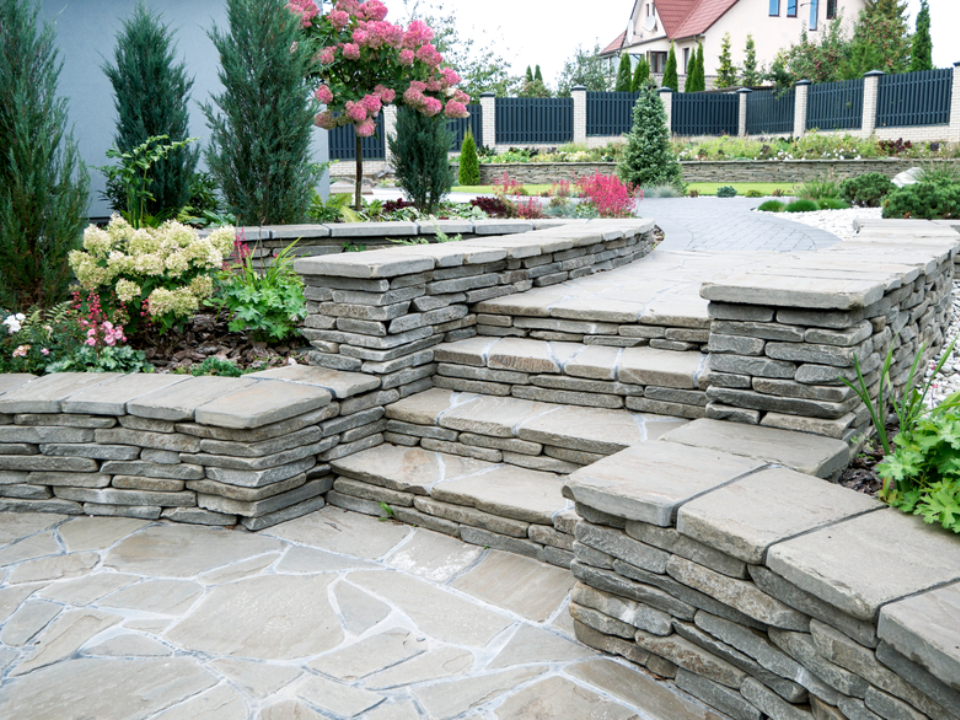
Rock steps are an excellent way to navigate sloped areas in your garden while adding a touch of elegance. Whether placed in a natural setting or as part of a designed path, stone steps can blend beautifully with the landscape. They can be constructed from large flat rocks or smaller, stacked stones depending on the desired look.
The solid structure of rock steps provides durability and safety, ensuring that the steps will last for many years. Using rocks for your steps also reduces the amount of lawn or paving needed, making it a low-maintenance option. These steps can lead to different garden areas or provide access to elevated spaces in your yard.
Stone Fountain Bases

Stone fountain bases are a stylish and durable way to support your water feature. Instead of a traditional plastic base, using a natural stone fountain base adds a more sophisticated look. The texture and color of the stone complement the water’s movement, enhancing the overall aesthetic of the fountain.
These bases come in various shapes and sizes, allowing you to find one that matches the style of your fountain and garden. A stone base also adds stability, ensuring that the fountain remains in place, even in windy conditions. It also adds a more natural, organic feel to the water feature, allowing it to blend with the surrounding landscape.
Rock Containments for Plants
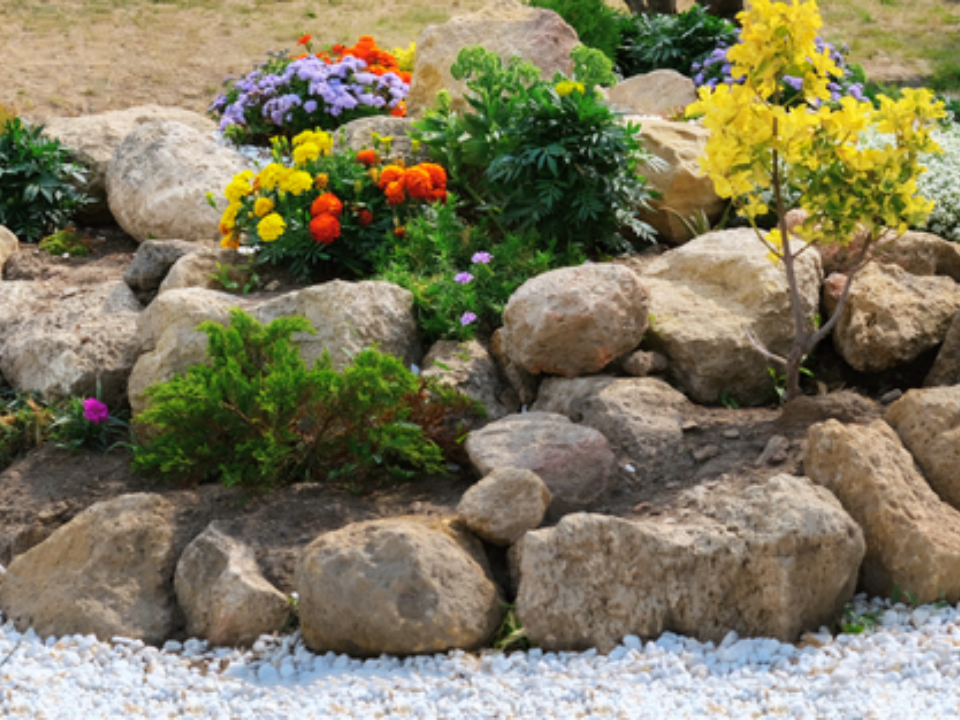
Using rocks as containment for plants is a great way to create attractive garden beds. Stones can be used to form raised beds that hold your soil in place, making them perfect for gardens with specific plants or flowers. The rocks not only keep the soil secure but also provide excellent drainage for the plants.
This approach allows you to design visually appealing garden beds that stand out in your landscape. You can mix different types of stones or use large flat rocks to create a more structured and organized garden space. The rocks also add a layer of texture to your garden that complements the plants and flowers.
Gravel Driveways

Gravel driveways offer a cost-effective and stylish alternative to concrete or asphalt. Using rocks to create a gravel driveway gives your property a more rustic and welcoming feel. The stones provide a textured surface that complements the natural surroundings, while the variety of gravel types available allows you to choose the one that best fits your style.
One of the main benefits of gravel driveways is that they are permeable, allowing water to drain through the surface. This helps to prevent puddles and erosion, making them an environmentally friendly option. Gravel driveways are also easy to maintain and can be replenished with fresh stones if needed, making them a long-lasting choice.
Stone Planting Containers

Using stone containers to plant your flowers or shrubs adds a rustic charm to your garden. Stone planters are durable and weather-resistant, making them ideal for outdoor use. The heavy material helps keep the plants secure, preventing them from being knocked over in windy conditions.
Stone containers come in many shapes, sizes, and colors, allowing you to mix and match them to suit the design of your yard. They also add a sense of permanence, making your plants appear as if they are part of the landscape. The earthy tones of the stone complement a wide range of plants, creating a harmonious and timeless look.
Stone Patio Floors

Using stone for your patio floor is a durable and attractive option for creating a comfortable outdoor living space. The natural texture of stone creates a solid, non-slip surface that is perfect for dining, lounging, or entertaining. You can choose from a variety of stones, such as slate, limestone, or granite, to achieve the look you want for your patio.
Stone patio floors are easy to maintain and can withstand heavy foot traffic and weather conditions. The versatility of stone allows you to design a patio that fits your personal style, whether you prefer a smooth, sleek surface or a more textured finish. Stone patios blend well with natural surroundings, making them a perfect addition to any garden.
This article originally appeared on Avocadu.
